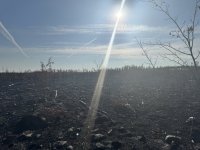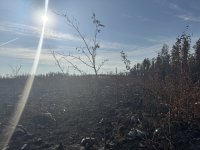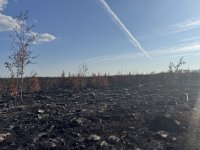Much of the area I guide bears in burnt last year, so I was asking myself this same question this spring. Not everything burnt but a lot of favorite stands were moonscapes. This left me salvaging old sites, finding new ones in unburnt areas, and putting a lot of hope in those that were untouched. Had to have something for the first hunters coming in. After the first flurry of work, I went back to some of the scorched areas to see what a little relocating of stands would produce, not really expecting a lot. I mean, moving a stand site based on having a tree big enough to support a ladder stand didn’t seem to inspire a lot of confidence.
The way it turned out, is it didn’t make much difference at all in the end. Turns out there isn’t much to eat in climax conifer growth unless you're a squirrel, and the water edges, shallow bays, deciduous areas and clearings where theres actually something to eat were unaffected or improved. There was a shift in they diet though, judging by scat that looked like a horse dropped it they were finding a lot more grasses than usual for that time of year. A lot of the bears would just empty the barrels of oiled oats and lick the oil off it. Some always did that, but this year it seemed like most did.
If I had to hunt an area that had burnt the same year, for anything I’d go to the nearest spot that didn’t burn. Theres just as many animals as before, but now they’re stacked. Much like the humans that had to evacuate I suppose, they don’t go farther than they really have to and come back when they can.
On a slightly different note; my 100% success rate is unchanged.

Just felt like saying that













































































